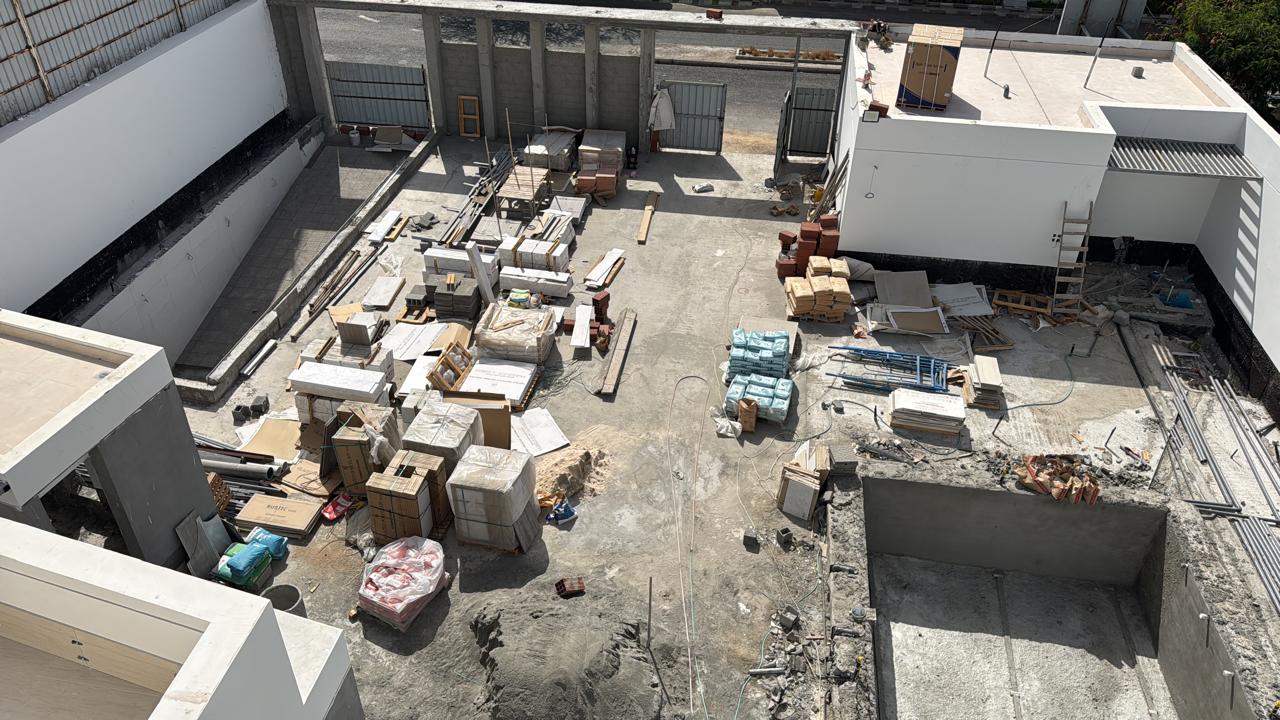Introduction
In the realm of high-end architectural projects, the success of construction doesn’t solely hinge on design brilliance or structural integrity. A pivotal, yet often understated, component is the meticulous orchestration of site logistics. From the initial groundwork to the final touches, effective site logistics ensure that every element of the construction process aligns seamlessly, especially when dealing with bespoke materials and intricate designs.
1. Understanding Architectural Site Logistics
Architectural site logistics encompass the strategic planning and management of all resources, materials, equipment, and personnel involved in a construction project. It’s about ensuring that the right materials arrive at the right place, at the right time, and in the right condition. This is particularly crucial for luxury projects where delays or mishandling can lead to significant cost overruns and compromised quality.
2. The Importance of Early Planning
Initiating logistics planning during the design phase is paramount. Early collaboration between architects, engineers, and logistics managers allows for the identification of potential challenges and the development of solutions before construction begins. This proactive approach minimizes disruptions and ensures a smoother construction process.

3. Site Layout and Organization
Efficient site layout is the backbone of effective logistics. It involves strategically positioning storage areas, access routes, and work zones to optimize workflow and safety. For instance, placing storage areas close to work zones reduces material handling time and labor costs. Additionally, clear signage and designated pathways enhance site navigation and reduce the risk of accidents.

4. Material Procurement and Handling
High-end projects often require specialized materials sourced from various parts of the world. Coordinating the procurement and delivery of these materials necessitates a robust logistics plan. Factors to consider include
- Lead Times: Understanding the manufacturing and shipping durations to schedule deliveries appropriately.
- Customs and Import Regulations: Navigating the complexities of international shipping to prevent delays.
- Storage Conditions: Ensuring that materials are stored in environments that preserve their quality until installation.
5. Managing Deliveries and Storage
Coordinating deliveries to align with the construction schedule is vital. Just-in-time delivery systems can be employed to minimize on-site storage needs and reduce the risk of material damage. However, this requires precise scheduling and reliable suppliers. Additionally, implementing inventory management systems helps track materials and prevent shortages or overstocking.
6. Handling Imported Materials
When dealing with imported materials, several additional considerations come into play:
- Quality Assurance: Verifying that materials meet the required specifications and standards.
- Transportation Logistics: Arranging for the safe and timely transport of materials from ports to the construction site.
- Customs Clearance: Ensuring all necessary documentation is in place to facilitate smooth customs processing.
7. Utilizing Adjacent Spaces
In urban settings or constrained sites, utilizing adjacent spaces for storage or staging can alleviate on-site congestion. This may involve leasing nearby land or coordinating with local authorities for temporary use of public spaces. Such strategies require careful planning and compliance with local regulations.

8. Implementing Technology in Logistics
Modern construction projects benefit greatly from technological advancements in logistics management. Tools such as Building Information Modeling (BIM) allow for detailed planning and visualization of logistics processes. Additionally, logistics software can aid in scheduling deliveries, tracking inventory, and managing supplier communications.
9. Ensuring Safety and Compliance
Safety is a critical aspect of site logistics. Proper training for personnel, adherence to safety protocols, and regular site inspections help prevent accidents and ensure compliance with occupational health and safety regulations. Moreover, maintaining clear records of safety procedures and incidents is essential for accountability and continuous improvement.
10. Continuous Monitoring and Adaptation
Construction projects are dynamic, and logistics plans must be adaptable to changing circumstances. Regular monitoring of logistics performance, including delivery timelines, material usage, and site conditions, allows for timely adjustments. Feedback loops and open communication channels among stakeholders facilitate proactive problem-solving and optimization of logistics processes.
Conclusion
Mastering architectural site logistics is integral to the success of high-end construction projects. Through meticulous planning, strategic coordination, and the integration of technology, construction teams can ensure that every component of the project aligns seamlessly. At INJ Architects, we prioritize logistics as a core element of our project management approach, recognizing its critical role in delivering exceptional architectural outcomes.
Architectural site logistics is no longer a peripheral task—it’s a central pillar of construction success. According to McKinsey, poor planning and logistical inefficiencies can result in up to 30% material waste and 10–15% project delays globally. Site logistics refers to the strategic organization of material flow, equipment staging, worker circulation, crane locations, and delivery schedules within the physical and temporal constraints of a construction site. In urban or high-density projects, mastering logistics becomes critical: the placement of a temporary access ramp or storage area can dramatically impact safety, schedule, and cost.
Leading construction firms now integrate 3D logistics planning tools as early as the design phase, allowing architects and engineers to visualize workflows, simulate spatial usage, and prevent site clashes. A 2021 study by Dodge Construction Network showed that projects using digital logistics tools reported 12% higher schedule reliability and 9% lower rework rates. Moreover, strategic on-site planning can reduce idle labor time by up to 18%, especially in congested sites where staging areas are limited. When approached as part of the architectural process—not just construction management—site logistics becomes a design challenge in itself: a choreography of machines, materials, and movement that directly shapes the success of a project.
For further insights into our architectural philosophy and project management practices, explore the following resources:
